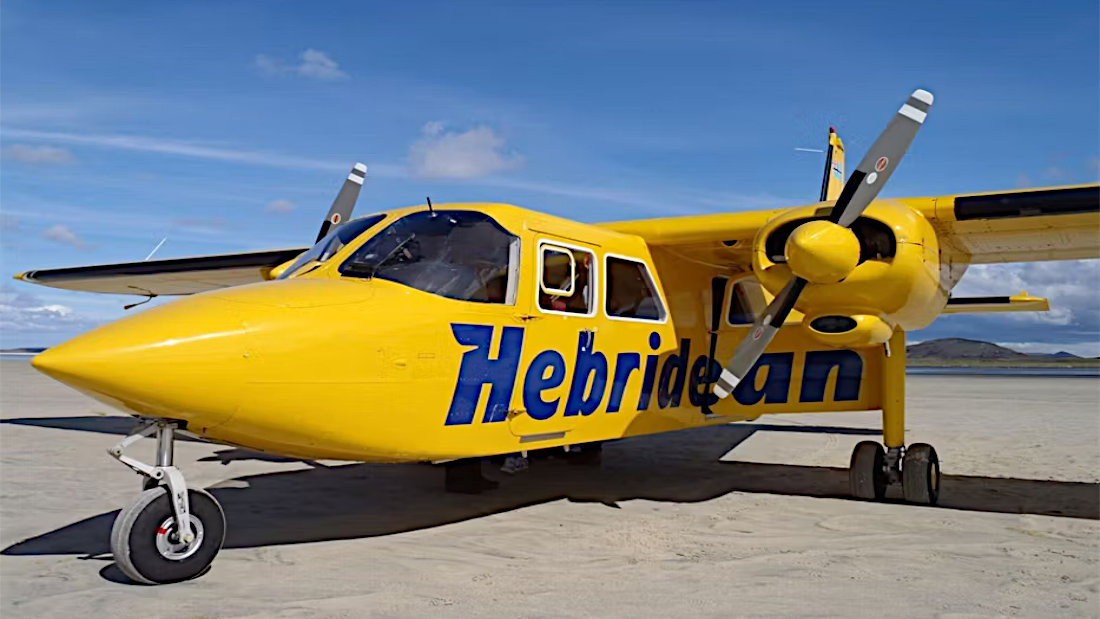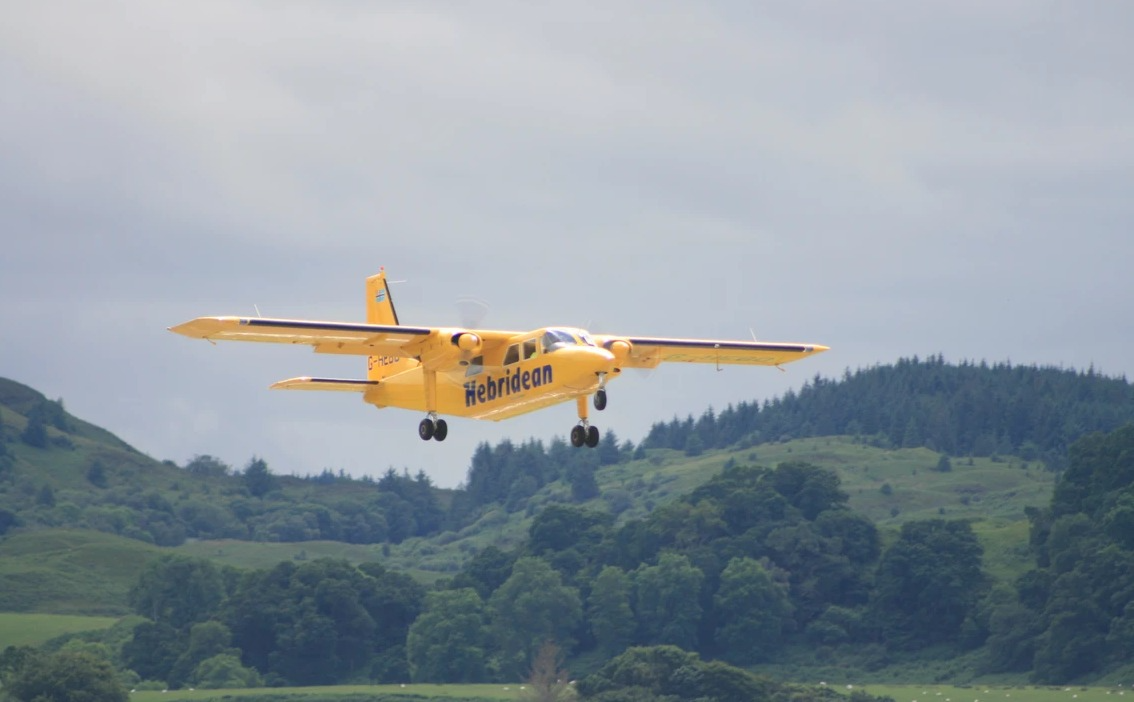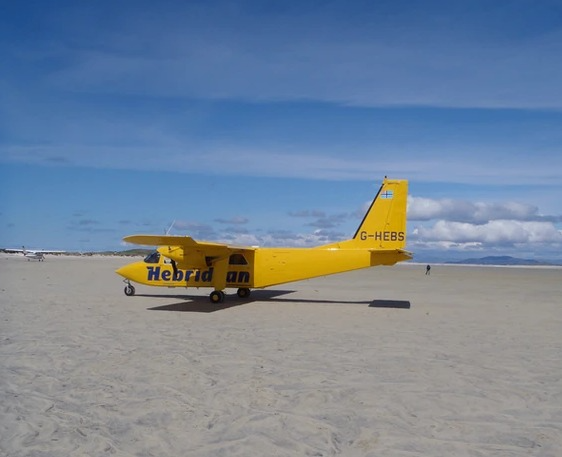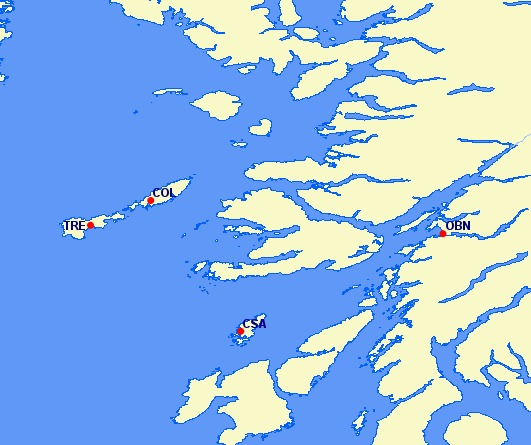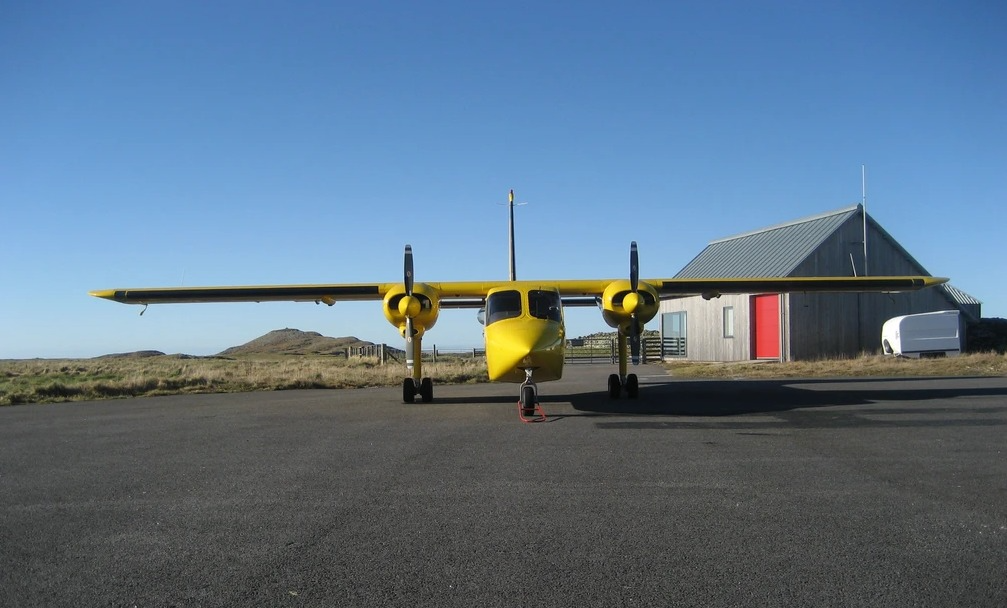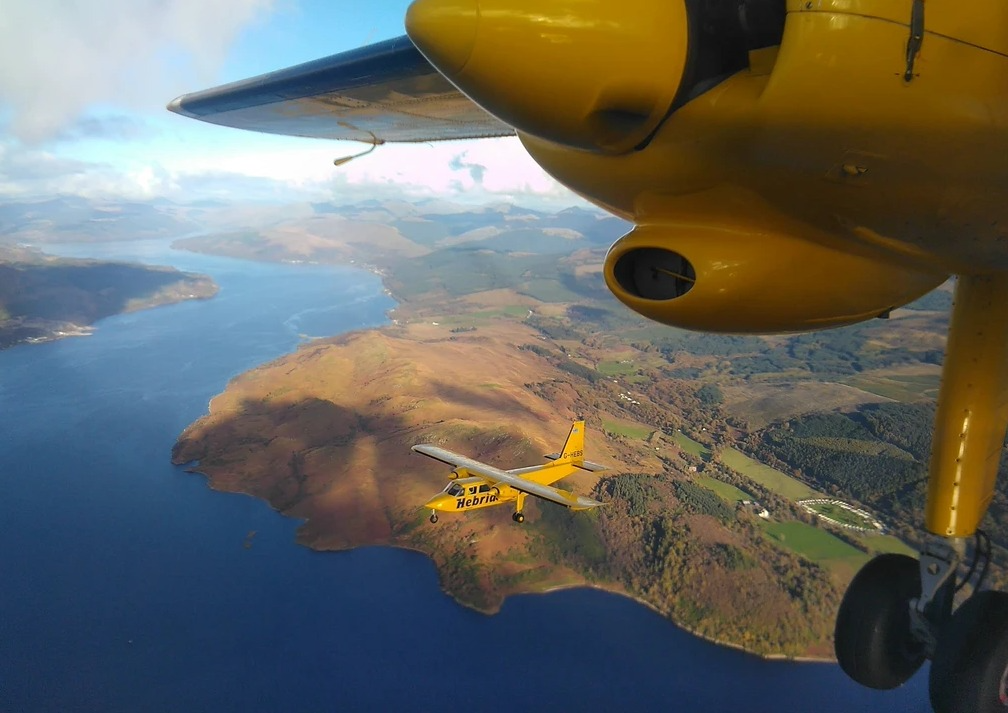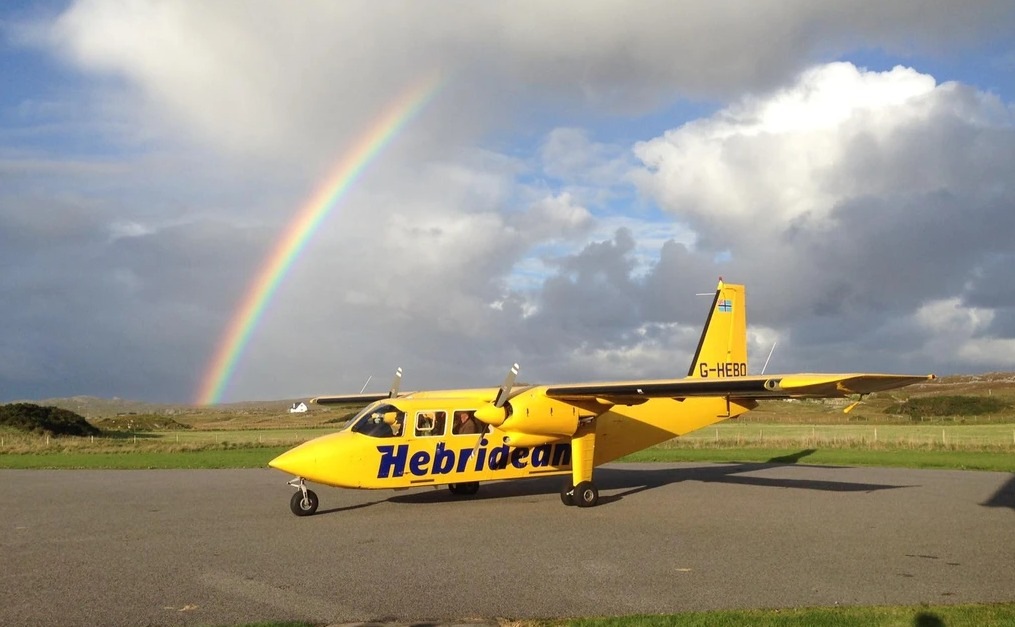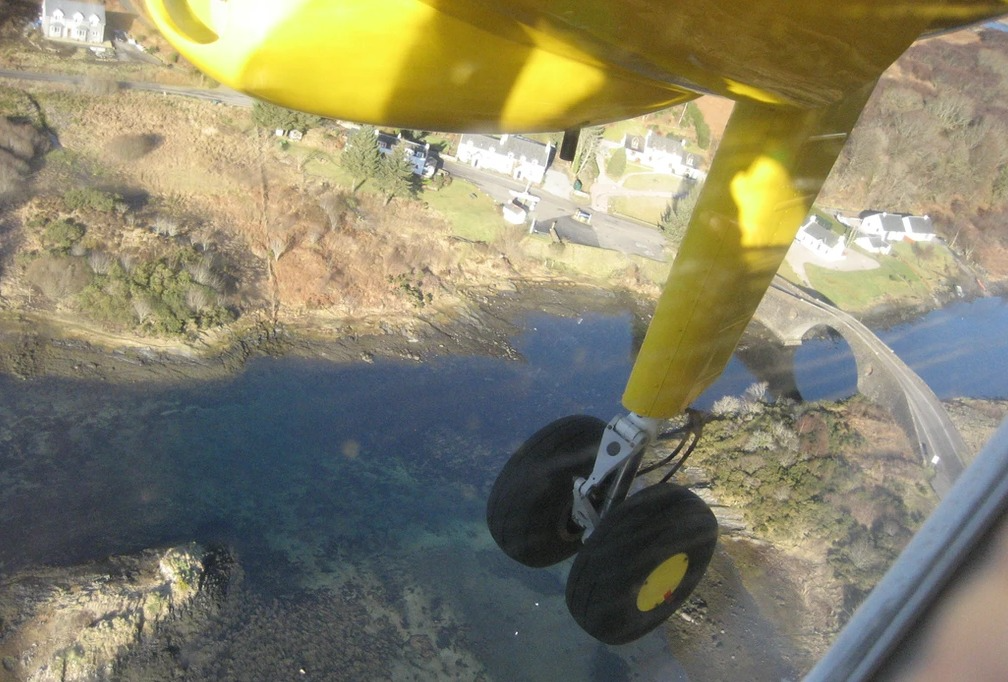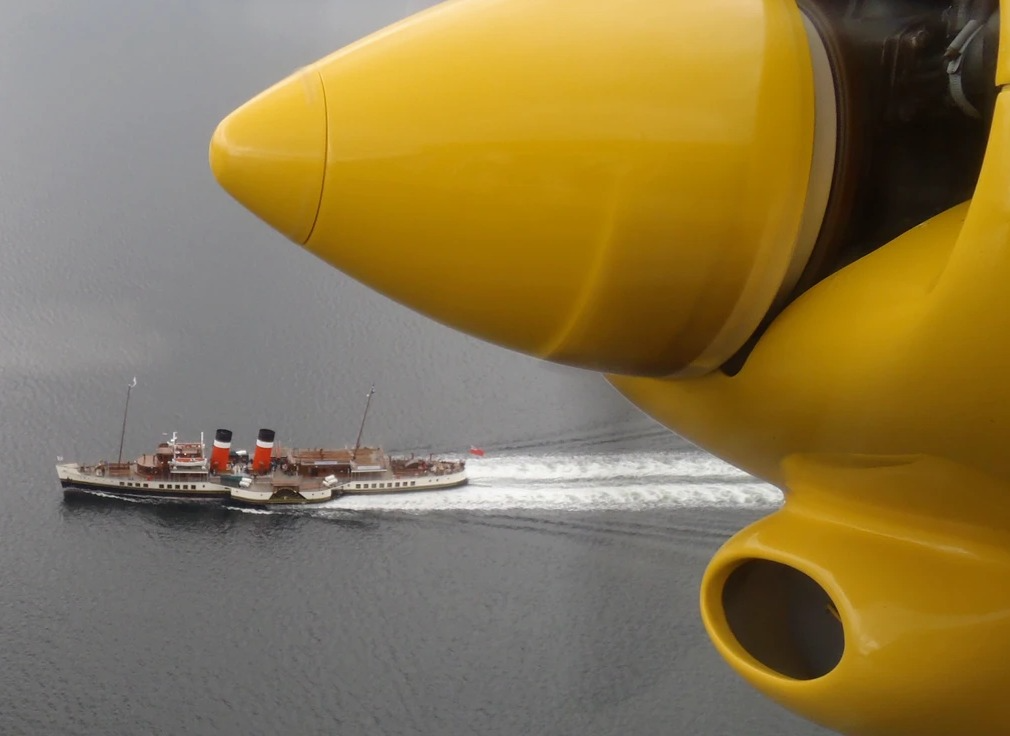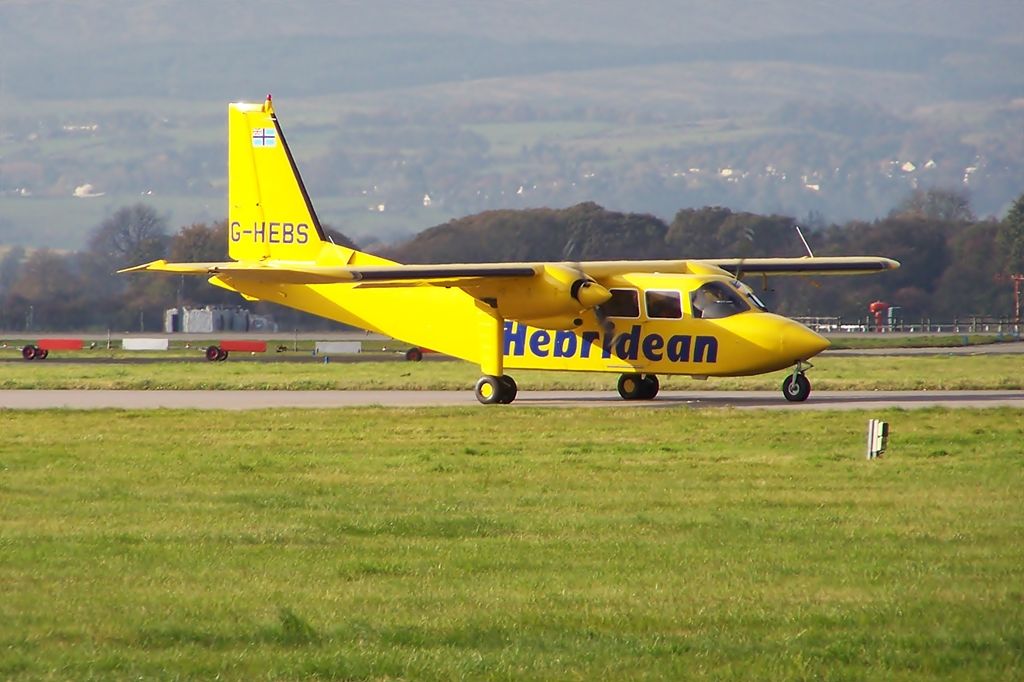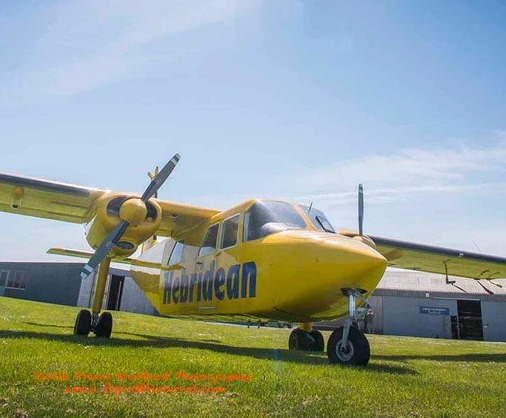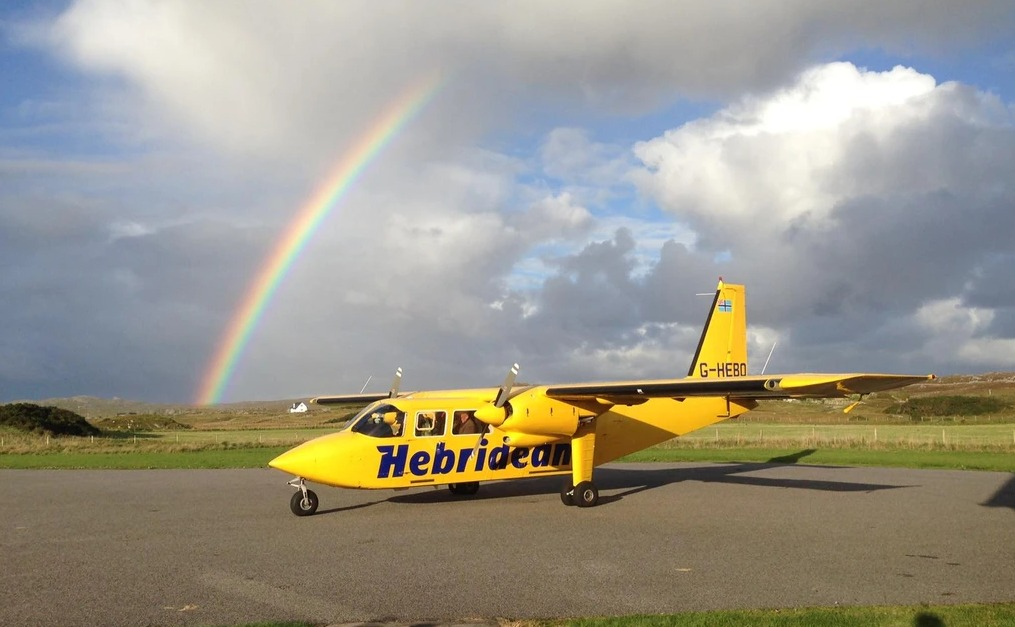Serving the western isles of Scotland with just one aircraft from its base at Oban Airport, Hebridean Air Services holds the title of Britain’s smallest scheduled airline.
Background to Britain’s smallest scheduled airline
Providing essential air services to several remote islands off Scotland’s west coast, Hebridean Air Services holds the unique title of Britain’s smallest scheduled airline. But how does such a carrier survive operating just a single aircraft year-round, often operating in some of the harshest weather conditions in the UK?
Based at the tiny airport that serves the Scottish coastal town of Oban (OBN), Hebridean Air Services (HAS) provides vital air links under a public service obligation (PSO) contract to three of the Inner Hebrides islands – Coll (COL), Colonsay (CSA), and Tiree (TRE).
Photo: Hebridean Air Services
The company was founded in 2008 by Scottish operator Highland Airways and was initially based at Cumbernauld Airport. However, the airline became known as HAS in April 2010 when it returned to private hands after the failure of its parent company.
Although having moved its primary base to Oban, the airline retained a small presence at its former headquarters at Cumbernauld Airport, located northeast of Glasgow.
In September 2016, HAS was sold by its owners to the AirTask Group, based at Cranfield Airport across the border in England. The AirTask Group, with its parent company Directflight Limited (the latter being the named AOC holder for the group), maintains bases at Oban, Inverness (INV), and Tingwall Airport (LWK) in Shetland.
Photo: Hebridean Air Services
Specializing in various aviation activities, Directflight operates an eclectic mix of aircraft on such missions as atmospheric research, maritime patrol, fisheries protection, and border patrols on behalf of the UK Border Force.
In addition to the HAS flights and its own specialist operations, Directflight also uses a pair of BN-2B Islanders (registered G-SICA and G-SICB) based at Tingwall Airport in Shetland for scheduled passenger services around the Shetland Islands.
Small and friendly
HAS currently operates a small scheduled network linking its base at Oban Airport on the west coast of Scotland with the airports at Coll, Tiree, and Colonsay. Scheduled flights between Oban and Islay were suspended in September 2023, although the company continues to operate charter flights to the island.
Image: GCMap.com
Scheduled flights offered by HAS provide residents of the outlying islands an essential lifeline with the mainland, enabling short trips for business, commerce, and tourism. They also facilitate the transport of residents to attend hospital appointments and access medical services not available on their home islands.
HAS’s four-day-a-week schedule sees it pair Oban to Coll (and vice versa) on Wednesdays and Fridays, Oban to Tiree (and v.v.) on Wednesdays and Thursdays, and Oban to Colonsay (and v.v.) on Fridays and Sundays.
Photo: Hebridean Air Services
In addition to carrying regular passengers on its services, HAS is tasked with transporting children from Coll to Oban to attend high school. The young passengers fly to Oban on Sunday afternoons and return to Coll on Fridays.
The fleet
Although operating just one aircraft on its scheduled network, HAS actually has two nine-seat Britten-Norman BN2B-26 Islanders (registered G-HEBO and G-HEBS) at its disposal.
One of these planes remains based at Oban to be used solely for the scheduled flights to the islands. The other is used as a reserve aircraft for maintenance cover and ad-hoc charter flights on behalf of the AirTask Group.
Photo: Hebridean Air Services
G-HEBS joined the fleet in 2007, while G-HEBO arrived in 2012. Both planes were built together, coming off the Britten Norman production line consecutively in the early 1990s. Before joining HAS, both aircraft carried out similar island-hopping roles around the outlying island airports off the east coast of Japan.
The robust and sturdy Islander is ideally suited to operating around the HAS scheduled network. The aircraft has excellent short take-off and landing performance, making it ideal for short trips around the Scottish islands.
Photo: Hebridean Air Services
With short sectors and multiple rotations, the type is also the perfect choice for flying passengers to the smaller airfields and shorter runways on both Coll and Colonsay. Both aircraft offer nine passenger seats and are fitted with two Lycoming piston engines that facilitate a cruising speed of 120 knots (140mph).
Focus on the HAS operation
Operating a single aircraft on just a handful of scheduled routes from a fairly isolated base comes at a price. However, the high costs of these scheduled services are subsidized by Argylle and Bute Council, the local authority in the region. The flights are categorized as PSO flights, and the additional funding means that the essential air services to Coll, Colonsay, and Tiree are preserved.
Photo: Hebridean Air Services
Flying in the harsh climes of western Scotland can be grueling, with inclement weather the norm and sea fog affecting the airport at Oban, located in the heart of Oban Bay. Because of the adverse conditions, according to HAS, the company’s pilots are highly trained and licensed to use various remote airfields in the Scottish Islands, with the reliability and punctuality of the air services maintained as a result.
Photo: Hebridean Air Services
The short sectors flown by HAS operate at a cruising altitude of around 2,000ft. However, altitude and routings are determined by several factors, including prevailing weather conditions and obstacles en route. The highest ground on any of the routes is the mountain of Ben More on the Isle of Mull. Standing at 3,169ft (965m), its summit is often covered by low clouds.
Sector lengths flown are relatively small for a scheduled carrier, with the longest being Oban to Tiree at around 55 miles (89km) and the shortest being Coll to Tiree at just 16 miles (26km). Flying times are 35 minutes and 15 minutes, respectively.
With ample runway and 24-hour opening hours, Glasgow Airport is the airline’s designated diversion airport. Company policy dictates that each flight carries a minimum of two hours worth of fuel, even for the shortest of sectors, in case inclement weather sets in.
Charters are big business
In addition to the scheduled network, HAS operates an extensive charter operation when the aircraft are not engaged on the scheduled passenger flights. With over 30 airports and airfields dotted around Scotland, HAS has flown to almost all of them, including private strips and airfields that only have grass runways. The airline’s specialty is sole-use charters, when an entire group of up to nine passengers can charter the whole aircraft to fly to their chosen destination.
Photo: Hebridean Air Services
Popular groups include golfers heading to The Machrie Golf Links on Machrihanish or the Tobermory Golf Course on the Island of Mull. The Islander can carry up to four golfers plus overnight bags and four sets of clubs comfortably.
HAS’ other specialty, in addition to sole-use charters, is tourist scenic flights. Again, originating from Oban Airport, the company flies up to four weekly scenic flights during the summer months. In the video below, you can join the HAS Islander as it undertakes a scenic flight departing from and landing back on runway 01 at Oban.
Lasting 30 minutes and costing £80 ($100) per passenger, the flights offer passengers views of various local landmarks. These include Dunstaffnage Castle, Oban Town and harbor, Bridge over the Atlantic, Loch Spelve, Torosay Castle, Duart Castle, Lismore Light, Lismore Island, Castle Stalker, Eriksa, and Tralee Bay.
Summary
Given the unique nature of the HAS operation, there can’t be too many scheduled airlines worldwide that offer such a service on such a tiny scale. That said, relying on the PSO contract for its scheduled flights while filling the aircraft’s spare flying schedule with charters and scenic flights appears to serve the company well.
Photo: Hebridean Air Services
It has operated for 15 years so far, with the last seven under the leadership of the AirTask Group. HAS continues to fulfill its vital role of linking remote communities based around several Scottish islands with essential services to the mainland.
Have you ever flown on a HAS service? Are you keen to do so after reading this article? Let us know in the comments.
Sources: Hebridean Air Servies, Civil Aviation Authority, GCMap.com

